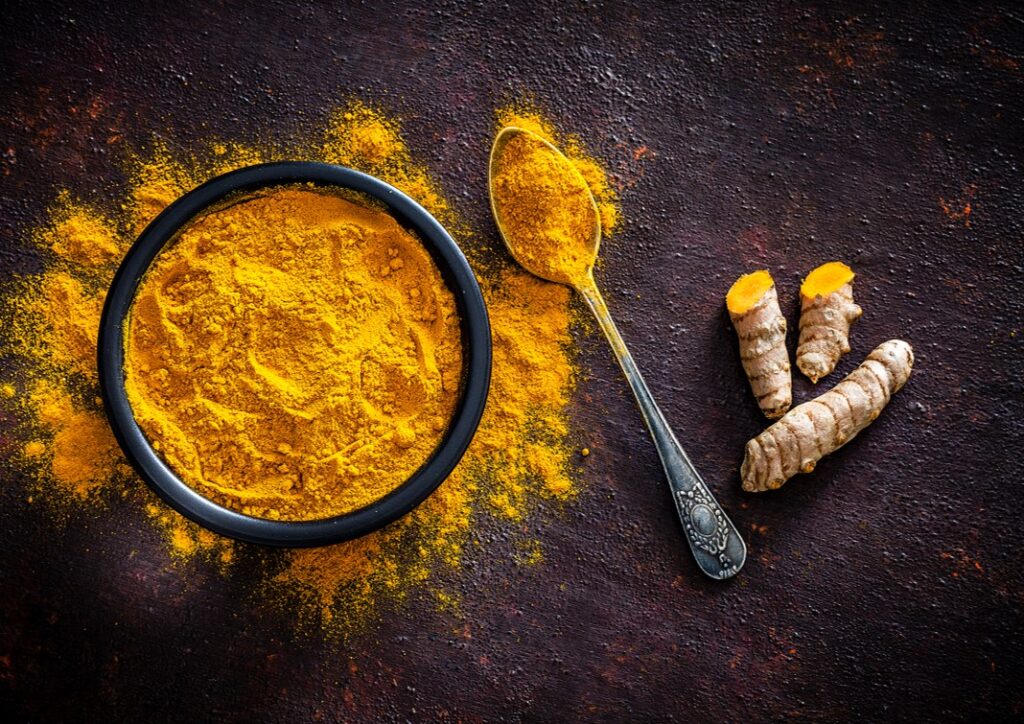Table of Contents
Introduction
Curcumin the active compound in turmeric is one of the ingredients that has stood the test of time and scientific scrutiny. It is known for its vibrant yellow color and potent anti-inflammatory properties, curcumin is increasingly being hailed as a golden ingredient in the cosmetics industry. This article delves into the use of turmeric in cosmetics, the various formulations it can be found in, the importance of correct concentration, potential toxicity, and future prospects in skincare.
Use of Curcumin in Cosmetics
Turmeric has been a staple in traditional medicine and beauty rituals for centuries, particularly in South Asia. In Ayurveda, it is known for its healing properties and is used to treat a variety of skin conditions. The cosmetic use of turmeric is primarily due to curcumin, which possesses antioxidant, anti-inflammatory, and antimicrobial properties.
Traditional Uses
Anti-inflammatory: Turmeric has been used to reduce redness and soothe skin irritations.
Antioxidant: It helps neutralize free radicals, preventing damage to skin cells.
Antimicrobial: Turmeric is effective against acne-causing bacteria.
Brightening Agent: It is known to improve skin complexion and reduce dark spots.
Formulations of Curcumin in Cosmetics
Curcumin’s versatility allows it to be incorporated into various cosmetic formulations. Here, we discuss some common types:
1. Cleansers
Curcumin-infused cleansers are designed to remove impurities while providing anti-inflammatory and antibacterial benefits. These cleansers help in soothing the skin, reducing redness, and preventing acne.
Example: A turmeric-based facial cleanser can effectively clean the skin without stripping away natural oils, making it suitable for sensitive and acne-prone skin.
2. Anti-Aging Products
Curcumin is a powerful antioxidant, which makes it a valuable ingredient in anti-aging formulations. It helps in combating free radicals, which are responsible for the signs of aging such as wrinkles and fine lines.
Example: An anti-aging cream with curcumin can enhance skin elasticity, reduce the appearance of wrinkles, and improve overall skin texture.
3. Bleaching Effect or Anti-Pigmentation
Curcumin has skin-lightening properties, which can help in reducing hyperpigmentation and evening out skin tone. It reduces the production of melanin pigment responsible for dark spots and uneven skin tone.
Example: A turmeric-based serum for pigmentation can help lighten dark spots and provide a more even complexion over time.
4. Serums
Serums with curcumin are highly concentrated formulations that deliver potent benefits to the skin. These are designed to penetrate deeply and provide targeted treatment for various skin concerns.
Example: A curcumin serum can be used to reduce inflammation, treat acne, and improve skin radiance.
The Right Concentration
While curcumin offers numerous benefits, the concentration of curcumin in cosmetics formulations is crucial. Studies suggest that a concentration of 3-5% curcumin is effective for most skincare applications. This concentration is sufficient to provide anti-inflammatory and antioxidant benefits without causing irritation.
Importance of Correct Concentration
Effectiveness: Proper concentration ensures the product is effective in delivering the desired benefits.
Safety: Avoiding irritation and adverse reactions requires careful formulation to maintain skin health.
Overuse and Potential Toxicity
As with any active ingredient, overuse of curcumin can lead to adverse effects. High concentrations or frequent application can cause skin irritation, redness, and contact dermatitis.
Potential Toxicity
Skin Irritation: Excessive use can lead to itching, redness, and irritation.
Contact Dermatitis: Overuse may trigger allergic reactions in sensitive individuals.
Staining: High amounts of turmeric can temporarily stain the skin yellow, which can be a cosmetic concern.
Conclusion
Curcumin, the active compound in turmeric, has firmly established itself as a transformative ingredient in the cosmetics industry. Curcumin’s anti-inflammatory, antioxidant, and antimicrobial properties make it a versatile addition to various skincare formulations. However, like any potent ingredient, it must be used in the right concentration to maximize benefits and minimize potential side effects.
As research continues to uncover the full potential of curcumin in cosmetics is likely to expand, offering more natural and effective skincare solutions. The future of skincare is bright with curcumin, promising healthier, more radiant skin with a touch of golden brilliance.
References
1.Chainani-Wu, N. (2003). Safety and anti-inflammatory activity of curcumin: a component of turmeric (Curcuma longa). Journal of Alternative and Complementary Medicine, 9(1), 161-168. https://pubmed.ncbi.nlm.nih.gov/12676044/
2.Lao, C. D., et al. (2006). Dose escalation of a curcuminoid formulation. BMC Complementary and Alternative Medicine, 6(1), 10. https://www.ncbi.nlm.nih.gov/pmc/articles/PMC1434783/
3.Vollono, L., M. Falconi, R. Gaziano, F. Iacovelli, E. Dika, C. Terracciano, L. Bianchi and E. Campione (2019). “Potential of Curcumin in Skin Disorders.” Nutrients 11(9): 2169. https://www.mdpi.com/2072-6643/11/9/2169
4.Zhang, D. W., Fu, M., Gao, S. H., & Liu, J. L. (2013). Curcumin and diabetes: A systematic review. Evidence-Based Complementary and Alternative Medicine, 2013, 636053. https://www.ncbi.nlm.nih.gov/pmc/articles/PMC3857752/
5.https://scifocos.com/beyond-taste-the-science-and-secrets-of-herbs-like-mint-lavender-and-curcumin/


